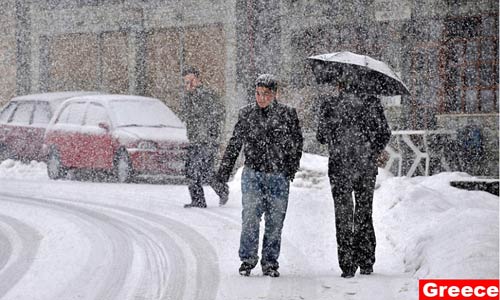The warming of the Earth increases the intensity of snowstorms
Climate change not only warms the Earth, but also intensifies and intensifies snow storms. This is a warning of the American scientific community on March 1.
Scientists claim that the occurrence of strong snow storms is related to the warming of the Earth. According to them, when the temperature of the Earth increases, the air absorbs more moisture, creating storms with great destructive power in all seasons, greatly affecting social life.
In fact, for the first time in 50 years, the North East region of the United States has experienced three tertiary snowstorms in just two seasons.

New York City also recorded a record amount of snow in February 2010 (94 cm) and January 2011 (91.5 cm). Although experiencing cold winters, the temperature in the US has not dropped to a record level.
Leading a recent study, scientists said that up to 80% of snow storms (falling more than 13 cm thick) occurred in the US in the 20th century when winter temperatures were higher than average. Therefore, if the Earth continues to heat up, the intensity of snowstorms in the next few decades will increase. This situation will only end when the temperature exceeds the threshold to overheat a strong snowstorm.
According to Mark Serreze, director of the National Snow and Ice Data Center in Boulder, Colorado, because the temperature in the Arctic in the winter last year rose to a record level, the ice at the pole dropped to a low level. record since December 2010-2010 / 2011.
He said that the amount of ice depleted in the Arctic, has increased the humidity of the air, strongly affecting the global climate. For example, in the winter, scientists witnessed Arctic Oscillation - a model that fluctuates in the difference of atmospheric pressure and abnormal sound. At that time, atmospheric pressure is higher than normal in the Arctic, causing wind zones to blow hot air into the area, while cooling air enters the United States and Europe.
In addition, the scientists said that even though the spring season in North America is nearing its end, the region will continue to experience new snow next week and when the ice melts melting could cause Historic floods in Minnesota, South Dakota and North Dakota.
- The cause of ice on Earth melted fast
- Earth warming will reduce the intensity of storms?
- Snowstorms and earthquakes are strong in some European countries
- Sharks become more aggressive because of global warming
- Next week, snowstorms can happen in China
- The warming earth will wake up the volcano
- What's going on with the Earth's 'refrigerator'?
- Greenhouse gases increase extreme rainfall
- Earth turns slower because of global warming
- What happens if the Earth continues to heat up?
- Cover the sun to block ... global warming
- Earth warming makes lizards smarter
 Is the magnetic North Pole shift dangerous to humanity?
Is the magnetic North Pole shift dangerous to humanity? Washington legalizes the recycling of human bodies into fertilizer
Washington legalizes the recycling of human bodies into fertilizer Lightning stone - the mysterious guest
Lightning stone - the mysterious guest Stunned by the mysterious sunset, strange appearance
Stunned by the mysterious sunset, strange appearance